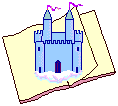|
|
|
| All Maps | Online Interactive Maps | Print Free Maps | Online Atlas |
CHINA and the MONSOONThe Monsoon Wind, blowing from Africa across the Indian Ocean and over the Himalayas brings water and sediment to China's coastal Plain. The well-watered, fertile soil has produced enough food to feed a large population for thousands of years. |
Free Maps and Educational Software:
A Brief History and Geography of China
More Free
|
|||
|
Click on the map to play. |
||||
The Himalayas and the Tibetan PlateauForty-five million years ago the Indian subcontinent, once a part of the supercontinent of Gondwanaland-- which had started to break up 167 million years ago-- collided with the continent of Asia. The forces moving the Indian continental plate continued pushing it under Asia. The land above was raised up to create the enormous Himalayan mountains - the tallest in the world- and the Tibetan Plateau - the largest area of high altitude land in the world. The Tibetan Plateau has an area of almost 1 million square miles (2.5 million square kilometers), with an average elevation of 14,700 feet (4,500 meters) in height. The Monsoon WindsMost winds blow in the same direction even if they only blow for part of the year. The Monsoon wind blows in opposite directions at different times of the year. As the Northern hemisphere warms in spring and summer the Monsoon wind changes directions and instead of blowing towards Africa it blows from Africa across the Indian Ocean, India and over the Himalayan Mountains into China and across the Tibetan Plateau. The monsoon reaches India in June and blows through September. The summer monsoon is a warm wind from the tropics. As it crosses the Indian Ocean it picks up vast amounts of water from the evaporation of water warmed by the sun. Rainfall as the Monsoon crosses the Himalayas and the Tibetan PlateauAs the monsoon wind comes to the Himalayan Mountains and the Tibetan Plateau, of course it has to rise to get over them. As winds rise over mountains, especially warm, moist winds, the water they contain condenses out as rain. This is called orographic lifting precipitation. But if you are on parts of the Tibetan Plateau underneath the warm, wet monsoon rising over the tallest mountains and the highest terrain in the world you don’t care what it is called - you just get very wet. Some places under the Monsoon get up to 10,000 millimeters - 400 inches - of rain a year. One inch of rain is a pretty strong rain. 400 inches is like a heavy rain every day of the year, except this falls in only four months. As the air of the monsoon descends north of the Tibetan Plateau, the opposite happens. The air is compressed as air pressure increases, relative humidity falls and you get hot, dry winds. The same winds that drench the mountains and parts of the plateau dry the Gobi and the Takla Makan deserts. Takla Makan translates roughly to “go in and you won’t come out.” The Himalayas and the Tibetan Plateau The two largest rivers of China, the Yangtze
and the Yellow (Huang He) Rivers also flow from the Tibetan Plateau
across the coastal plain of China to the Sea. Every year the
rivers rise as they bring to the coastal plains some of the enormous
amount of water that fell as rain from the Monsoon over a thousand miles
away. In some years the rivers rise over their banks and flood;
sometimes these floods are huge. The rivers bring more than water.
The Tibetan plateau is still rising and thus is still being eroded away
by these rains. The rivers are notably muddy (the Yellow River is
named for its color) - full of sediment. Much of the fertile
Coastal Plain of China was built up by the sediment deposits from the
floods of these rivers.
|
||||
U.S. Map Puzzle Learn the states of the United States and their capitals with this fun and educational puzzle game. How fast can you put all of the states in the right places? Free Software! |
 |
|||
Learn to Read by Reading with:
|
 |
|||
|
|